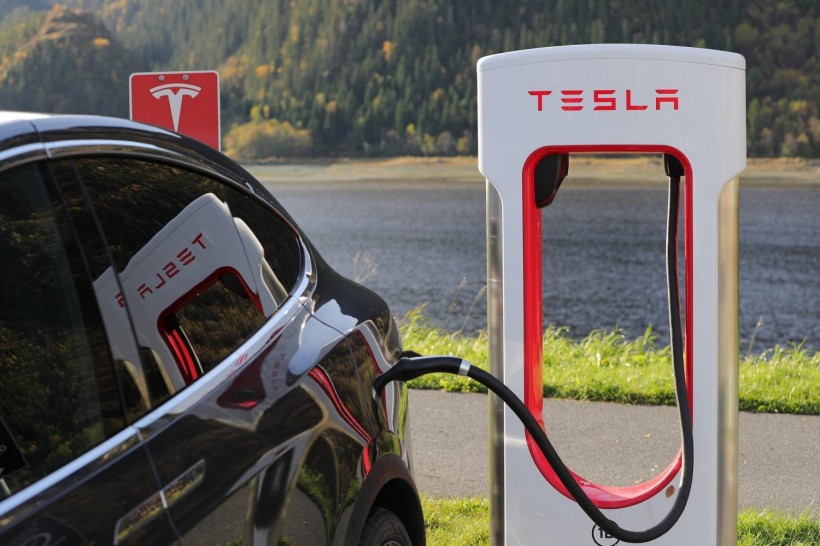Artificial intelligence (AI) is playing a significant role in the rapidly advancing automotive industry. This trend has been pioneered primarily by Tesla. Let's look at how AI has changed the auto insurance industry.
Self-driving vehicles or autonomous vehicles (AVs) aid the driving process by minimizing the need for human drivers. There may soon be fleets of AVs specializing in deliveries, moving freight, and facilitating mass transit.
This development will lead to a decline in road accidents caused by driver negligence. In addition, cars will be equipped with modern recognition technologies such as AI-enhanced computer vision to look for obstacles and avoid them.
Are EVs more expensive to insure?
As a tech pioneer, Tesla has become a leading name in the world of electric vehicles. New technology leads to changes in other businesses, such as auto repairs and automotive insurance.
While driving and transportation will become much safer, the increasing level of technology may offset some of the savings. Specialized Tesla insurance is available and will lead to innovations in the insurance industry.
As society develops and implements connected vehicles, new business models will focus on shared mobility as an alternative to traditional vehicle ownership. As a result, fleet and automotive mechanics will also face unique challenges adapting to this technology.
Will AI improve traffic flow?
AI-integrated chips will enable cars to navigate traffic and freeways, leaving us to change how we experience transportation. For example, the Tesla autopilot feature uses cameras, ultrasonic sensors, and radar to perceive the environment around the vehicle.
Sensors and cameras provide drivers with information that increases awareness of the driver's surroundings. This data is quickly processed to make driving safer and less stressful.
Radar detects and measures the distance around the cars in light, dark, and other weather conditions. Autopilot is a driver-assistance technology. The feature doesn't create a completely self-driving vehicle.
Drivers are frequently reminded to keep their hands on the steering wheel. When the car detects that the driver is no longer holding the wheel, it will alert the driver to take the wheel.
How will AI impact the environment?
AI companies will directly affect the environment by reducing the number of vehicles on the road and helping vehicles get where they're going efficiently. Reducing the number of cars on the road cuts down on pollution.
According to the U.S. Environmental Protection Agency, transportation accounts for over a quarter of all greenhouse gas emissions in the U.S. Increasing driving efficiency with AI could help reduce that and prevent further climate change.
Also, as AI helps reduce crashes and make driving safer, manufacturers will produce more compact, fuel-efficient cars.
Vehicles moving around more efficiently, combined with fewer vehicles on the highway, will have significant indirect environmental effects. As we burn fewer fossil fuels, we will extract less.
This technology will lower the demand for these fuels and the emission-heavy processes used to extract them.
AI and the Future of Smart Cities
AI in automobiles will increasingly overlap with the development of sustainable smart cities. 5G connectivity will enable communication from vehicle to vehicle.
From a sustainability perspective, technology will allow predictions of road demand and traffic management. In addition, these improvements will improve efficiency and lower energy consumption.
New vehicles come to market with a tamper-proof digital identity that makes them stand out from other cars in the same network, easily tracking vehicle data for factors like driver safety, insurance information, and predictive maintenance.
How will data sharing impact driving?
Sharing data is helpful for the individual customer but will also overhaul the whole transportation ecosystem. These developments will help relieve stress, anxiety, and driver drowsiness while maintaining temperature and humidity and improving visualizations.
Manufacturers are working to provide comfort to passengers with systems that help reduce stress, provide driver assistance solutions, detect behavior, and monitor automotive systems.
Essential functions in autonomous vehicles include object detection, safety, driver monitoring using eye tracking, virtual assistance, gesture controls, speech and voice recognition, mapping systems, and automated driving.
What challenges does AI present?
AI still faces challenges. While current vehicles are using increasing levels of artificial intelligence, more autonomy in tour transportation systems will increase challenges with the public's confidence in this new technology.
In addition to the initial anxiety some users may experience, there are issues with electric vehicles, artificial intelligence, and other new technology. These include their high prices, poor battery life, distance traveled on a charge, cost for smart car insurance, and our currently inadequate EV charging infrastructure.
(Photo : Alexandra Arcand)
Alexandra Arcand writes and researches for the auto insurance comparison site, AutoInsurance.org. She is passionate about technology and how it can improve sustainability and impact the future.
* This is a contributed article and this content does not necessarily represent the views of sciencetimes.com














![Venus Lost Water and Dried Out Due to Chemical Reaction HCO+ Dissociative Recombination [Study]](https://1721181113.rsc.cdn77.org/data/thumbs/full/53493/258/146/50/40/venus-lost-water-and-dried-out-due-to-chemical-reaction-hco-dissociative-recombination-study.jpeg)
